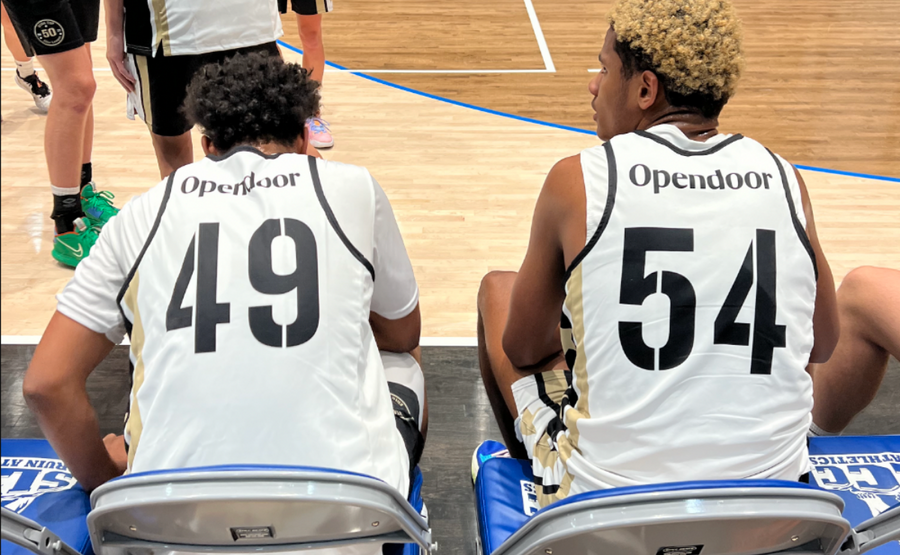
5 Essential Tips To A Successful Sports Marketing Campaign
Posted in:
A successful sports marketing campaign can make the difference for brands looking to stand out and connect with their audience. The sports marketing landscape spans a wide array of areas, from licensing and broadcasting, to sponsorships, sporting goods, and others. By 2027, the global sports market is expected to exceed $623.63 billion dollars (Statista).
The power of sports marketing lies in its ability to engage fans on a deeply emotional level, transcending the game itself to create lasting impressions and drive consumer loyalty.
In this article, we will explore the key components of a successful sports marketing campaign, from understanding the audience to leveraging strategic partnerships and innovative content. It’s worth mentioning that sports marketing takes shape in many forms as well, from traditional sponsorships in pro, collegiate, and youth sports marketing, to event activations, athlete influencers, and more.

Know Your Audience: Understand the demographics, preferences, and behavior of your target audience. Tailor your messaging and content to resonate with them.
One example of a sports marketing campaign that deeply understands its audience is Nike’s “Dream Crazy” campaign featuring Colin Kaepernick.
Nike recognized the values and attitudes of its audience, particularly younger consumers who prioritize social justice and activism. The campaign’s messaging was aligned with these values, featuring Kaepernick, a polarizing athletic figure known for his activism both on and off the football field, as the face of the campaign.
Nike understood that its audience resonated with Kaepernick’s message of perseverance and social justice, and the campaign successfully tapped into this sentiment. By taking a stand on a controversial issue, Nike not only demonstrated its understanding of its audience, but also strengthened its connection with them. The campaign generated significant buzz and engagement, showcasing the power of understanding your audience’s behaviors, preferences, and values in sports marketing.

Strategic Partnerships: Collaborate with sports teams, athletes, or relevant sporting brands to enhance your campaign’s reach and credibility. Partnerships can help you access new audiences and add authenticity to your message.
One strategic partnership was with SnapChat and Gatorade in 2016. The two brands created “Gatorade Dunk ” campaign during the 2016 NBA All-Star Weekend. They created a unique augmented reality (AR) experience that allowed users to virtually “dunk” a basketball over their heads using the Snapchat app.
The campaign leveraged Snapchat’s popularity among younger audiences and the NBA All-Star Weekend’s high viewership to engage fans in a fun and interactive way. By partnering with Snapchat, Gatorade was able to reach a large audience and generate buzz around its brand during a major and historic event.
Engaging Content: Create content that is engaging, shareable, and relevant to your audience. Use storytelling, videos, and interactive elements to capture attention and create a memorable experience.
In 2018, Adidas launched the “Here to Create Change” campaign in collaboration with soccer star Lionel Messi. The campaign featured a series of short films showcasing Messi’s journey to greatness and the global impact he has had on the sport.
The films highlighted Messi’s skill, determination, and humility, while also craftily weaving in Adidas’s commitment to creativity and innovation.
The “Here to Create Change” campaign was a hit with fans and critics alike, generating millions of views and positive sentiment on social media. It showcased Adidas’s ability to create compelling content that not only promotes its brand but also connects with audiences on a deeper level.
Multi-Channel Approach: Utilize a mix of channels such as social media, traditional advertising, influencer partnerships, and experiential marketing to reach a wider audience and reinforce your message.
Under Armour has for years been taking a multi-channel approach to its sports marketing. From campaigns featuring professional athletes like NBA star Stephan Curry to ballet dancer Misty Copeland, the sports brand has dedicated its marketing to all different kinds of sports, not just the big four. One incredibly successful campaign Under Armour has also incorporated some experiential marketing by hosting events where fans could meet the Under Armour athletes and participate in pro-led training sessions. It became a multi-channel approach through the ways these events were covered and highlighted through social and digital content. Under Armour has been able to reach a wide audience and engage with fans across different platforms, resulting in increased brand visibility and customer loyalty.
Measure and Adapt: Use analytics to track the performance of your campaign and make adjustments based on the data. Continuously optimize your approach to improve results and maximize ROI.
What analytics should you be looking at?
Impressions! Impressions measure the number of times your ad or content is displayed. This metric helps you understand the reach of your campaign and how many people are becoming aware of your brand or message. While impressions alone don’t measure engagement, they provide an indication of the potential for engagement. A high number of impressions suggests that your content is being seen by a large audience, increasing the chances of engagement.
Also being able to track impressions over time and do a comparative analysis is one of the best ways to adapt.
A successful sports marketing campaign can bring your brand to new heights – and through these five tips, you’ve got a head start!
